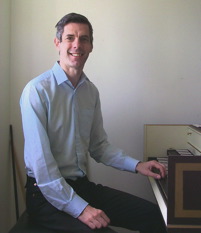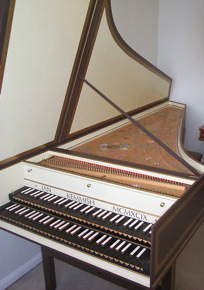The author

Me

My pride and joy, built from an Early Music Shop kit – an
experience which mixed heaven and hell in liberal
quantities, and one which I can heartily
recommend.
In the 1990's I was a co-founder of 5D Solutions Ltd. and my PostScript 'clone' software, Jaws, became dominant in the wide format and colour proofing markets, chalking up a moderately impressive list of 'firsts' and 'fastests' along the way.
After selling the rights to Jaws in 2000, I stepped down from Jaws completely in 2002. I turned to experimenting full time with frequency domain synthesis. Developing software without commercial time constraints enabled me to examine everything carefully and simplify both the core architecture and the 'user model', the result being the synthesiser presented here.
Frequency domain synthesis represents the culmination of a long term, if sporadic, interest in synthesis. This was first sparked by the Royal Institution Christmas Lectures in 1971, presented by Prof. Charles Taylor, 'Sounds of Music: the Science of Tones and Tune'.
Eventually the penny dropped that some kind of spectral modelling was the only way to generate sounds electronically that could rival the complexity of natural sounds - there is just no other way to model the filtering effect of a violin soundboard, for example. It was equally clear that doing this in real time with affordable hardware was out of the question.
By the turn of the century, as you can see from the photographs, the pendulum of my musical interests was at the opposite end of its swing. But it was clear that computer hardware had improved to the point where a usable additive synthesiser could be made to run on a normal personal computer. One of the two big problems with additive synthesis - that of hardware cost - was fast disappearing. Perhaps it was time to revive my old ideas and address the user interface issues.
After nearly eight years and only a few false starts, the mountain has laboured and brought forth a molehill. I hope some of you find it useful.
Ian Kemmish
Biggleswade, March 2006.
